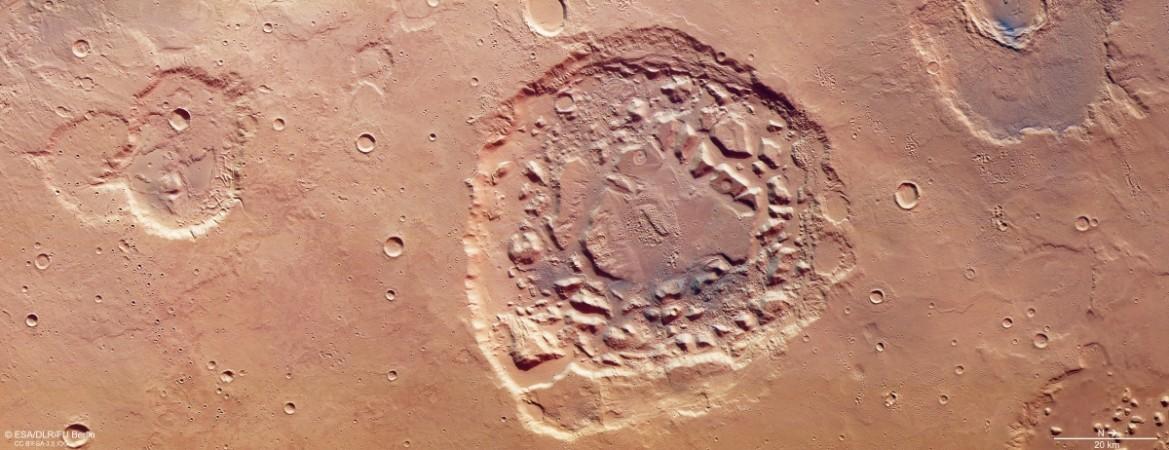
European Space Agency (ESA) has released the detailed images of the Ismenia Patera, a huge crater on Mars, shot through their "Mars Express" program. However, its origins continue to be a mystery for scientists. No one seems to know how this massive crater was formed.
The best guesses that researchers have so far is that it is either what is left of an ancient supervolcano or an impact crater from a massive asteroid hitting the red planet, explains the ESA. The word patera is taken from a Latin word that means "flat bowl", as per the release. This crater is located in the Arabia Terra region on Mars.
Mars can be split into two distinct regions by geography — Northern Lowlands and the Southern Highlands. The Patera is in the transition area between the two. The Southern Highlands, according to the ESA report, is a few kilometers higher up when compared to the northern half of Mars. This divide in topography is of particular interest to scientists because there is not one theory to clearly explain how it happened.
This strange feature of Mars is either caused by a massive single impact on the planet, multiple smaller impacts, or Earth-like tectonic plate movements below the surface, but none of them seem to properly explain it.

Ismenia Patera is about 75 km across, notes the report. The center of this crater is surrounded on all sides by a ring of hills. Also, rocks, blocks and other material seem to have been flung out from the crater itself, looking like nearby impacts. Material thrown out from the main crater has created a lot of dips and depressions within the crater as well. Also, channels and canals seem to flow from the crater into its center which is covered by ice deposits. ESA likens these deposits to rocky glaciers which have been built up over time as evidenced by the flow of these gullies.
Scientists are still undecided on whether or not this structure is a supervolcano that collapsed on itself after spewing out massive amounts of magma. Mars is, after all, home to the Olympus Mons — the Solar System's largest volcano.
















